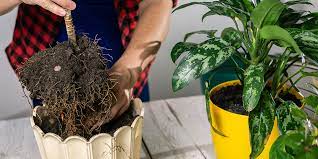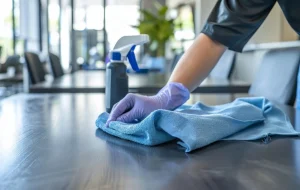Transplanting 101: When and How to Move Plants from Nursery Planters

Gardening is an art and a science combined. It’s an art because there’s a certain level of intuition and creativity involved. It’s a science because there are specific rules and methods that need to be followed to ensure success. One such method every gardener needs to master is transplanting. Whether you’re just starting with gardening or have been at it for years, understanding the nuances of transplanting is vital.
Why Transplant from a Nursery Planter?
Transplanting is the process of moving a plant from one location to another. Often, when you purchase plants, they come in a nursery planter. While these planters are ideal for the initial growth and selling of the plant, they aren’t always the best for long-term growth.
- Growth Space: Nursery planters are often restrictive in size. As plants grow, they need more space to expand their root system.
- Nutrient Depletion: Over time, the soil in the nursery planter can become depleted of essential nutrients.
- Better Drainage: A larger, more permanent pot or ground spot may offer better drainage than a nursery planter.
When to Transplant from a Nursery Planter
Determining the right time to transplant is as important as knowing how to do it. Here are signs to watch for:
- Root Crowding: If the roots are growing out of the drainage holes or are visible on the surface, it’s time.
- Stunted Growth: If the plant stops growing or appears stunted, it may need more space.
- Yellowing Leaves: A sign of nutrient deficiency, often due to exhausted soil.
How to Transplant from a Nursery Planter
Preparation is Key
Gather Necessary Materials
Before you begin the process, ensure you have all the necessary materials on hand.
- Quality Soil: Depending on the plant type, you may need potting mix, garden soil, or specialized soil.
- New Pot or Garden Bed: Make sure it’s larger than the nursery planter and has good drainage.
- Watering Can: To water the plant after transplanting.
- Gloves: To protect your hands and prevent the transfer of any diseases.
- Trowel: For digging and scooping.
Prepare the New Location
Whether you’re moving the plant to a new pot or a garden bed, ensure that the location is ready.
- For Pots: Fill the pot 1/3 full with soil. Make a well in the center for the plant.
- For Garden Beds: Dig a hole twice as wide as the nursery planter and of the same depth.
The Transplanting Process
Remove the Plant from the Nursery Planter
- Water the Plant: Watering the plant a few hours before transplanting can help the root ball stay intact.
- Turn the Planter Upside Down: Hold the plant at the base and gently tap the bottom of the nursery planter until the plant comes out.
Inspect and Prune
Once out, inspect the root system.
- Loosen the Roots: If the roots are circling the root ball, gently tease them out to encourage outward growth.
- Prune Damaged Roots: Use sharp, sanitized scissors or pruning shears to remove any damaged or overly long roots.
Place in the New Location
- Position the Plant: Ensure it’s at the same depth as in the nursery planter.
- Backfill with Soil: Surround the plant with soil, pressing gently to remove air pockets.
Aftercare
Water Generously
- Initial Soak: Water the plant thoroughly after transplanting to settle the soil and eliminate air pockets.
- Continued Care: Monitor the plant over the next few weeks. It may need more frequent watering than usual as it establishes itself.
Monitor and Protect
- Look for Signs of Shock: Transplanting can be stressful. Yellowing leaves or drooping might occur. Ensure the plant is well-watered and consider using a transplanting fertilizer or root booster.
- Protect from Direct Sun: For the first few days, shield the plant from direct sun to reduce stress.
Conclusion
Transplanting plants from a nursery planter to a more permanent home is essential for their long-term health and growth. By following the steps outlined above, and being mindful of the plant’s needs and signs, you can ensure a smooth transition and set your plants up for success. Remember, gardening is as much about patience and observation as it is about action. Happy gardening!








